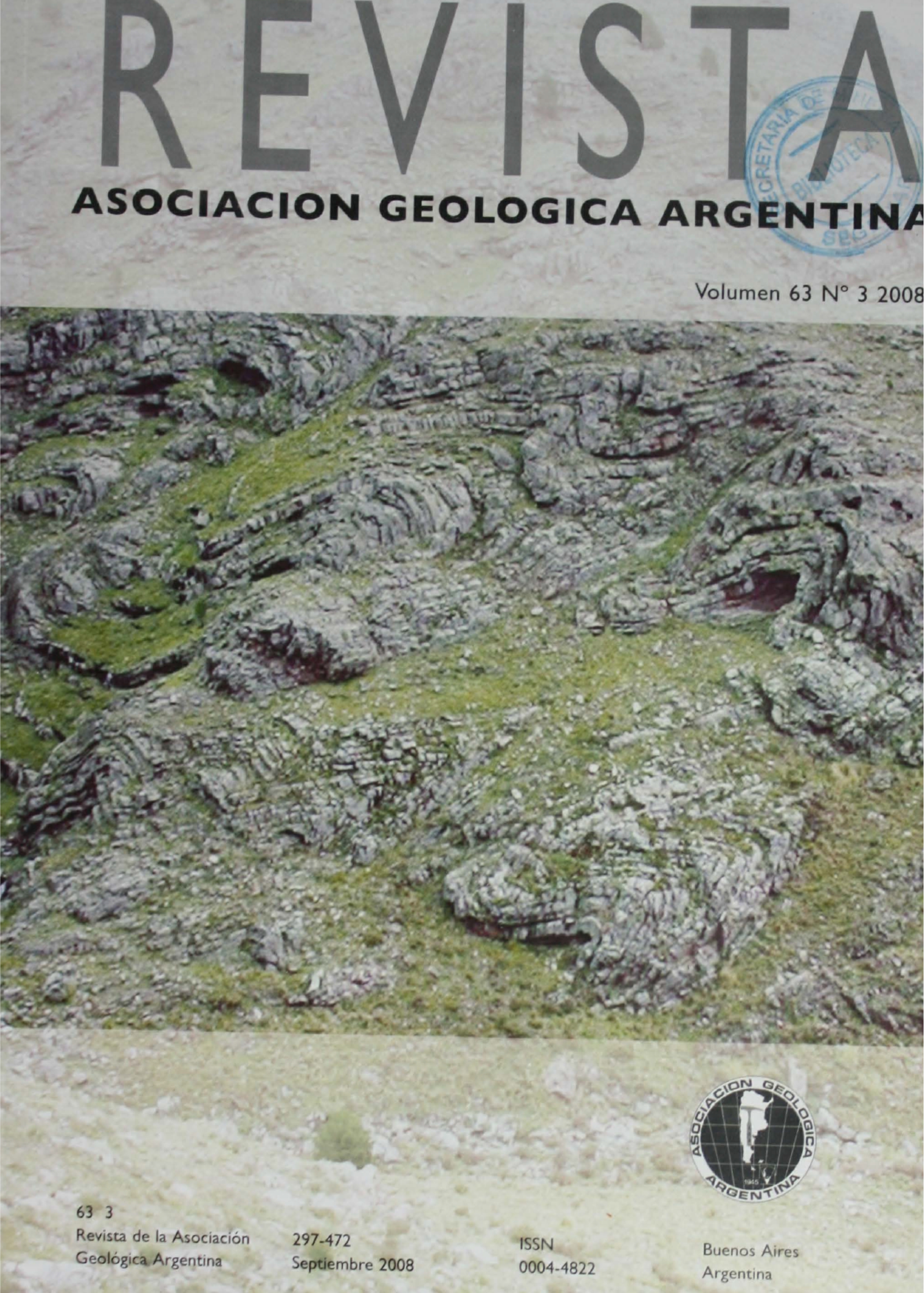Depósitos de flujos gravitacionales subácueos de sedimentos en el flanco activo de la Cuenca Neuquina durante el Cretácico Temprano
Contenido principal del artículo
Resumen
En particular, la geometría del sustrato marino en el sector oeste de la Cuenca Neuquina durante el Jurásico Superior y el
Cretácico Inferior es virtualmente desconocida, ya que la mayor parte del registro sedimentario ha sido removida durante el
ascenso tectónico de la cadena andina durante el Cretácico Tardío y el Cenozoico. En este trabajo se describen sucesiones
del Berriasiano - Valanginiano temprano conformadas por depósitos de flujos gravitacionales de sedimentos que afloran en
el sector occidental de la faja plegada y corrida de la cuenca Neuquina (Rahueco y Huncal). Las mismas proveen nuevas claves para reconstruir la configuración de la cubeta marina (Mar Neuquino) durante el proceso de emplazamiento y emergencia del arco magmático andino. El sistema de Rahueco es una sucesión de 90 m de espesor ubicada por encima de las lutitas y margas anóxicas típicas de la Formación Vaca Muerta y la discordancia intra-valanginiana. Comprende a un conjunto
de fangolitas masivas entre las que intercalan siete cuerpos de areniscas turbidíticas con diseño de superposición granocreciente, en las que se definen direcciones de transporte orientadas hacia el este y norte. El sistema de Huncal es una sucesión
de entre 15 y 25 m de espesor compuesta por turbiditas arenosas que se emplaza dentro de una espesa sucesión de lutitas y
margas anóxicas. Este intervalo turbidítico aparece involucrado en un horizonte de desmoronamiento, acompañado por
zonas de cizalla de ángulo bajo a moderado, que muestra una persistente orientación de la estructura de deformación sinsedimentaria hacia el este. El registro de flujos gravitacionales submarinos procedentes del oeste y sudoeste permite sugerir el
desarrollo de una zona con alto gradiente hacia el margen occidental del Mar Neuquino. Dicha configuración de talud difiere sustancialmente de la que existiera hacia los márgenes austral y oriental para los mismos tiempos, y que se caracterizara
por una geometría deposicional de bajo gradiente o en rampa. La marcada asimetría en la configuración del sustrato marino
refleja el contexto geotéctonico de retroarco de la Cuenca Neuquina. En este marco, el desarrollo del talud estaría vinculado con la generación de una topografía positiva correspondiente al arco magmático del margen occidental de Gondwana.
Detalles del artículo

Esta obra está bajo una licencia internacional Creative Commons Atribución-NoComercial 4.0.
Nota de copyright
Los autores conservan los derechos de autor y garantizan a la revista el derecho de ser la primera publicación del trabajo licenciado según una licencia de atribución Creative Commons que permite a otros compartir el trabajo con el reconocimiento de la autoría y de la publicación en la que se publicó por primera vez.
Declaración de privacidad
Los nombres y direcciones de correo electrónico introducidos en esta revista se usarán exclusivamente para los fines declarados por esta revista y no estarán disponibles para ningún otro propósito u otra persona.

